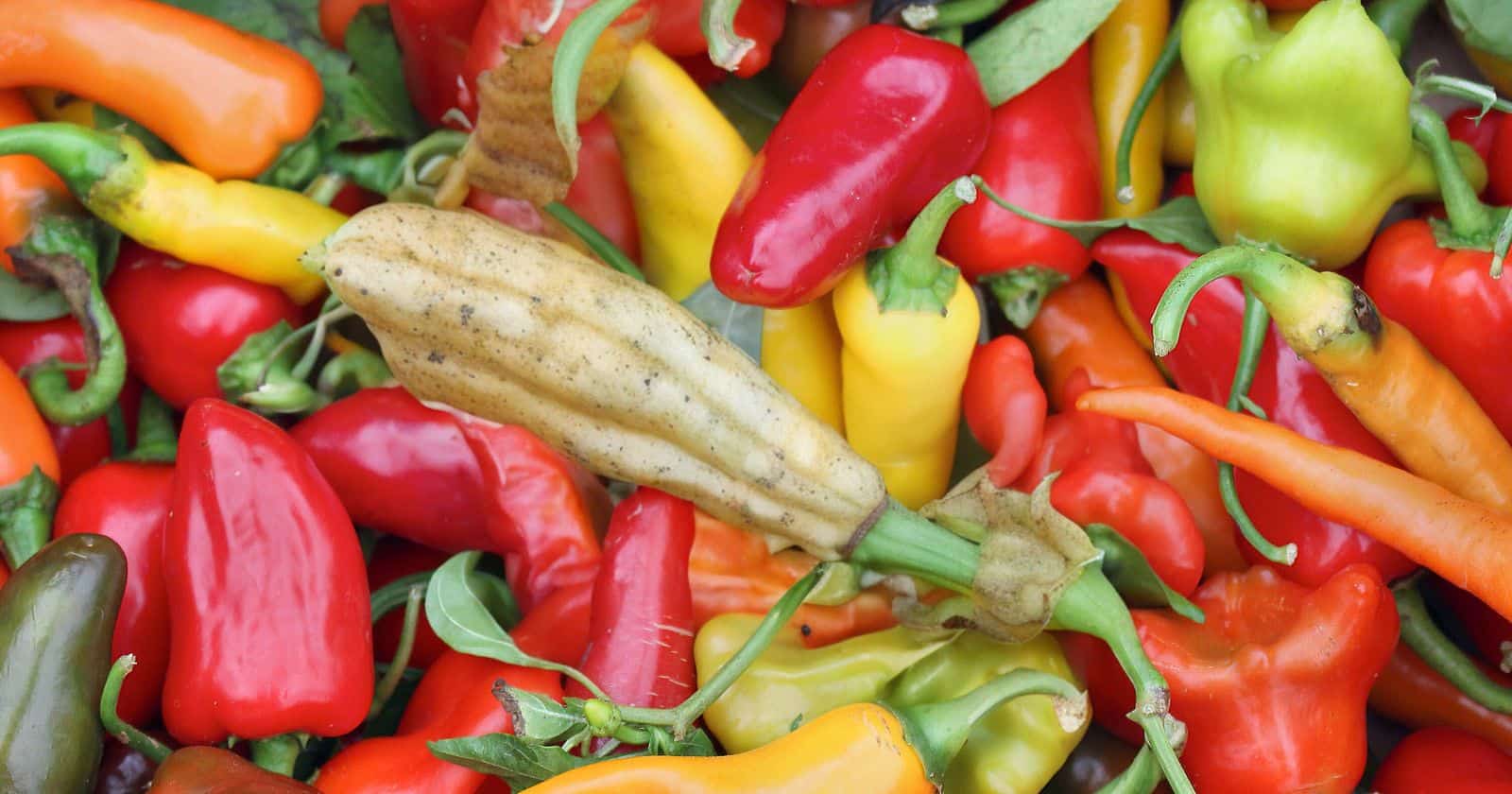Seeing weird white spots pop up on your pepper plant leaves? Don’t panic – there are a few possible culprits behind the problem.
Chances are it’s a common issue like powdery mildew or sunscald. Powdery mildew causes white, powdery patches that spread from older leaves to younger ones. While sunscald bleaches leaves with too much sun exposure.
Other potential causes are nutrient deficiencies and blossom end rot. The key is identifying the specific cause so you can take action – like improving airflow, hardening off transplants, or correcting soil nutrients. With vigilance and prompt troubleshooting, you can get your plants back to vigorous growth.
Want to get to the root of those vexing white spots and restore your pepper plants to their former glory? Keep reading! In this article, we’ll explore the various reasons pepper leaves turn white and how to fix them.
You’ll get actionable tips to diagnose the problem and implement solutions tailored to the cause. Soon you’ll have flourishing, productive pepper plants pumping out perfect pods once again.
Powdery Mildew
One of the most prevalent culprits behind white patches on pepper leaves is a fungal disease called powdery mildew.
What is Powdery Mildew?
Powdery mildew is caused by various fungal species in the Erysiphaceae family. It affects a wide range of plants, including cucumbers, melons, squash, roses, and grapes.
On pepper plants, the first sign is often white spots that appear on older leaves. These spots gradually grow into round splotches that can cover the entire leaf surface in a white, powdery coating.
As the disease progresses, it spreads upward to infect younger growth. Infected leaves often curl, distort, yellow, and eventually die off.
What Causes Powdery Mildew?
Powdery mildew thrives in humid conditions with moderate temperatures – 60-80°F. Stressed or overcrowded plants are more susceptible. Excess nitrogen fertilizer and inadequate soil calcium also increase risk.
While not directly caused by wet foliage, overhead irrigation can help spread spores. Greenhouse settings with poor air circulation tend to harbor the fungus.
Managing Powdery Mildew
If powdery mildew is the cause of white pepper leaves, here are tips to treat and prevent future outbreaks:
- Prune off infected leaves and destroy (don’t compost) to reduce spread.
- Improve air flow and reduce crowding between plants.
- Avoid excessive nitrogen fertilization which encourages succulent growth.
- Apply fungicidal sprays labeled for edible plants as needed.
- Water at the base of plants rather than overhead.
- Disinfect any gardening tools that contacted diseased foliage.
With vigilance, you can minimize powdery mildew’s foothold and keep your pepper crop thriving.
Sunscald
Too much sun exposure can also cause white, dried patches on pepper leaves. This condition is known as sunscald.
What Causes Sunscald?
Intense sunlight heats leaf surfaces faster than interior tissues can cool. This causes water stress, cell damage, and white, papery lesions on leaves.
Sunscald often occurs if plants experience abrupt changes in sunlight levels. Moving seedlings from indoors to full outdoor sun makes them especially prone.
Identifying and Preventing Sunscald
Look for white, bleached patches on leaf tops and edges. Affected tissues will be dry and crunchy. Squeezed leaves won’t spring back and retain an indentation.
To prevent sunscald:
- Harden off transplants by slowly increasing sun exposure over 7-10 days.
- Provide shade cloth over new transplants for the first week outside.
- Plant in locations that receive morning sun, afternoon shade.
- Mist leaves during peak heat to cool tissues.
With protection from intense afternoon sun, your peppers can thrive. The white spots will stop spreading.
Nutrient Deficiencies
Sometimes lack of key nutrients can starve peppers of compounds needed to form chlorophyll and healthy foliage. Deficiencies show up as pale spots and chlorosis (yellowing).
Calcium Deficiency
Calcium is important for proper cell wall development. Without enough calcium, young leaf tips and margins turn pale or white and become distorted.
Blossom end rot can also occur, with sunken black lesions on pepper fruits.
Remedy calcium deficiency by:
- Applying a balanced fertilizer with calcium.
- Spraying leaves with calcium chloride solution.
- Mixing crushed eggshells into soil.
- Maintaining optimal soil pH around 6.5.
Magnesium Deficiency
Magnesium aids chlorophyll production and protein synthesis. Deficiency causes pale veins and yellowing between veins, sometimes with white necrotic spots.
Correct low magnesium by:
- Applying Epsom salts (magnesium sulfate) per label directions.
- Spraying leaves with magnesium sulfate solution.
- Choosing a complete fertilizer with magnesium.
With the right balance of nutrients, including calcium and magnesium, your peppers will regain healthy dark green foliage.
Blossom End Rot
While affected fruits are most conspicuous, blossom end rot can also manifest on leaves. Leaf margins yellow and turn white before drying and browning.
On fruits, blossom end rot appears as a dark leathery spot at the base.
This disorder is caused by erratic uptake of calcium due to uneven soil moisture. Hot, dry periods followed by sudden heavy watering impedes calcium absorption.
To prevent blossom end rot:
- Maintain consistent soil moisture – about 1-2 inches of water per week.
- Use drip irrigation rather than overhead watering.
- Apply calcium supplements to soils and foliage.
- Choose pepper varieties with higher calcium needs met.
With attentive watering and ample calcium, you can prevent the frustrations of blossom end rot.
Solutions for White Pepper Leaves
If you notice troubling white patches, spots or edges on your pepper plants, take action to get them back to peak performance.
- Identify the specific cause – fungal disease, sunburn, nutrient issues, etc.
- Remove and destroy infected plant parts.
- Improve growing conditions – sunlight, spacing, irrigation, nutrients.
- Apply remedies tailored to the origin of the problem.
While alarming, white pepper leaves can often be corrected through modifying cultural practices. With a little detective work and TLC, your plants will be pumping out picture-perfect peppers again in no time.
Can You Eat Peppers Turning White?
Seeing white spots appear on your pepper plants may make you wonder – are the fruits still safe to eat? The answer depends on the underlying cause.
If white spots are caused by:
- Powdery mildew – Fruits are still edible if harvested promptly before fungal spores develop. Cut away any affected spots.
- Sunscald – White markings are cosmetic only. Underlying flesh is unaffected. Safe to eat.
- Nutrient deficiencies – Edible but may have poorer flavor and texture. Boosting soil nutrients can improve quality.
- Blossom end rot – Eat fruits without rotted portions. Cut away damaged tissue.
Of course, always inspect fruits closely and discard any with extensive disease or decay. But in many cases, peppers with some white spotting on foliage are still fine for consumption if the fruits themselves appear healthy.
The foliage issues alone do not make the peppers unsafe to eat. As long as the fruits are free of damage, disease, and decay, they can be harvested and enjoyed.
So don’t let a few white-splotched leaves scare you away from savoring the fruits of your labor. With selective harvesting of only prime pods, you can still reap a bountiful pepper harvest.
Cooking with Peppers Turning White
Even if your pepper plant leaves are spotty, you can still make use of the harvest in your kitchen. Here are some ideas for using peppers with minor white markings:
- Chop up into cooked dishes like soups, stews, sauces – appearance won’t matter.
- Roast or grill affected peppers, then skin – white blemishes will peel away.
- Puree into salsas, hot sauces, marinades – color and texture imperfections disappear.
- Pickle pepper slices in brine – white spots won’t show up or affect flavor.
- Use in any recipe where peppers are an ingredient, not main focus.
- Make pepper powder from dried peppers to use as seasoning.
While you’ll want to trim off any major defects, slight cosmetic white spots can be worked around in recipes where appearance doesn’t matter.
The key is avoiding letting affected peppers go to waste! With creative preparation methods, you can minimize visibility of white markings and still enjoy the fruits of your labor. Don’t let minor cosmetic issues stop you from putting those homegrown peppers on your dinner table.





